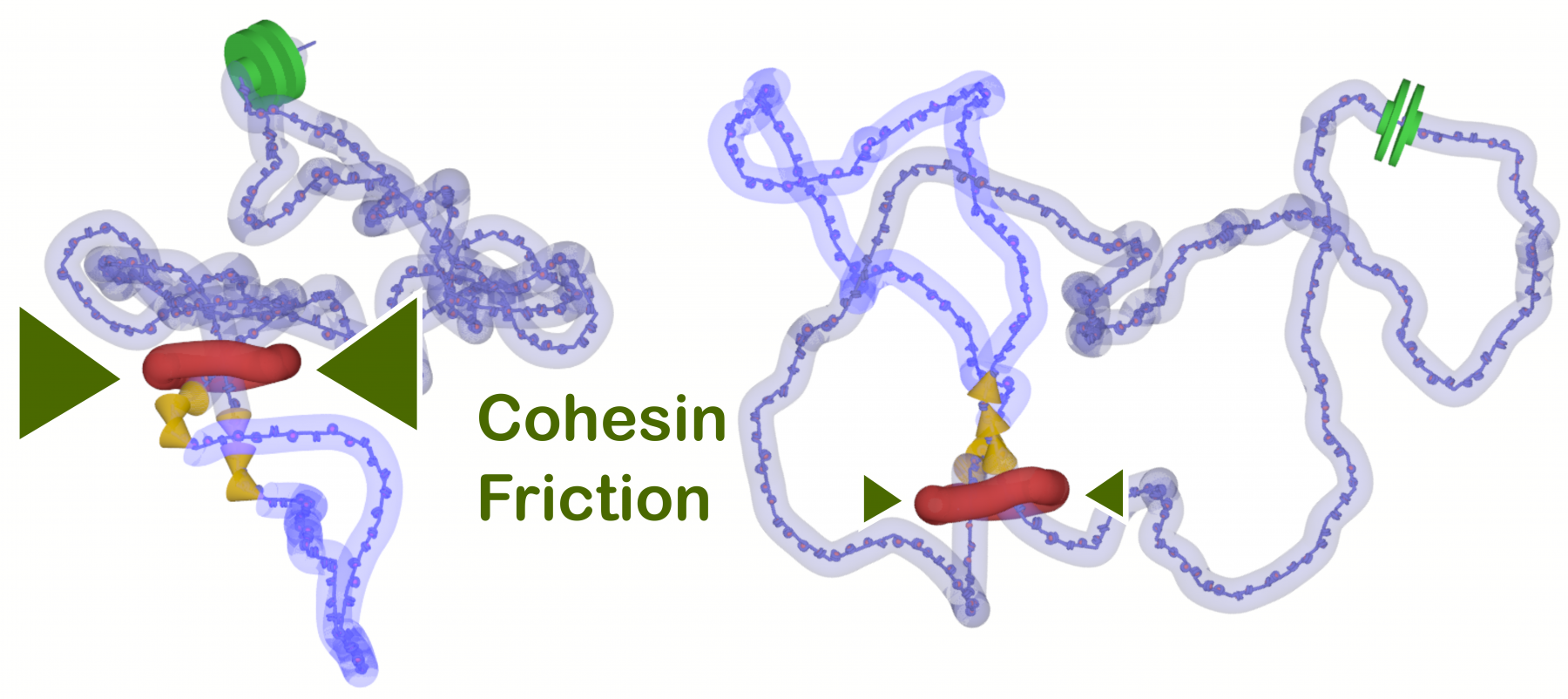Chromatin dynamics and chromatin structure are a two-way relationship governed by polymer physics and active biological processes. Thanks to the research in the field of computational biology and modeling, computer simulations became indispensable in studying these complex relationships. It is now generally accepted that looped structures occurring in the intermediate range of ordering of chromatin are formed by a loop extrusion mechanism involving specialized proteins (structural maintenance complexes or SMCs). Although the motor activity of SMCs has been speculated for a long time, the motor activity of cohesin was discovered only recently (Davidson 2019). While evidence of the cohesin’s motor activity is missing, other mechanisms that could efficiently drive the loop extrusion without motor activity of SMCs have been discovered by computer simulations. These mechanisms account for transcriptionally driven loop extrusion or entropically driven loop extrusion by osmotic pressure. In our previous model, we have shown that the cohesin in handcuffed conformation can be pushed mechanically by emerging plectoneme formed during transcription, exerting pressure on the joint section of handcuffs. In the current work, we use coarse-grained molecular simulation to further explore the extrusion driven by supercoiling while employing much lower levels of supercoiling. Moreover, recent works favor non-topological binding of cohesin on fibers, which would solve a range of topological problems while bypassing other molecular machinery sitting on DNA.
We propose a model for cohesin-mediated loop extrusion, where the loop extrusion is driven entropically by the energy difference between supercoiled and torsionally relaxed chromatin fibers. Different levels of negative supercoiling are controlled by varying imposed friction between the cohesin ring and the chromatin fiber. The speed of generation of negative supercoiling by RNA polymerase associated with TOP1 is kept constant and corresponds to 10 rotations per second. The model was tested by coarse-grained molecular simulations for a wide range of frictions between 2 to 200 folds of that of generic fiber and the surrounding medium. The higher friction allowed for the accumulation of higher levels of supercoiling, while the resulting extrusion rate also increased. The obtained extrusion rates for the given range of investigated frictions were between 1 and 10 kbps, but also a saturation of the rate at high frictions was observed. The calculated contact maps indicate a qualitative improvement obtained at lower levels of supercoiling. The fits of mathematical equations qualitatively reproduce the loop sizes and levels of supercoiling obtained from simulations and support the proposed mechanism of entropically driven extrusion. The cohesin ring is bound on the fibers pseudo-topologically, and the model suggests that the topological binding is not necessary. The work addresses current problems in molecular biology and employs advanced methods and original solutions in the study.
Download “Article” Entropic_Competition_Drives_Loop_Extrusion.pdf – Downloaded 234 times – 2 MB
Download a copy of the manuscript

